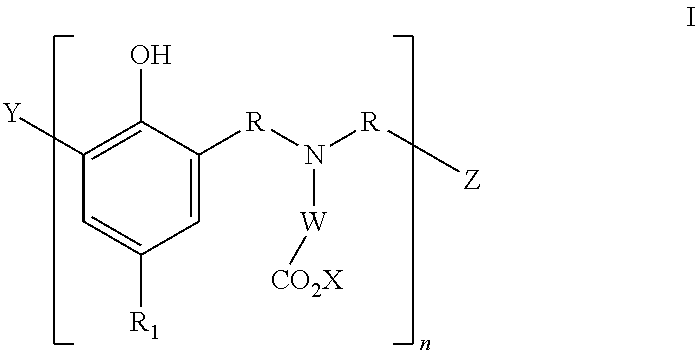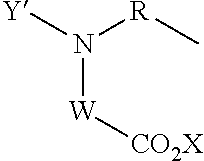Lubricating oil compositions with enhanced piston cleanliness
a technology of lubricating oil composition and cleanliness, which is applied in the lubricant composition and the petroleum industry, can solve the problems of increasing fuel consumption, increasing the viscosity of lubricant at low and high temperature, so as to improve the fuel economy performance and enhance the cleanliness of the piston
- Summary
- Abstract
- Description
- Claims
- Application Information
AI Technical Summary
Benefits of technology
Problems solved by technology
Method used
Image
Examples
Embodiment Construction
[0041]Prior to discussing the invention in further detail, the following terms will be defined:
[0042]Definitions
[0043]As used herein, the following terms have the following meanings, unless expressly stated to the contrary:
[0044]The term “Total Base Number” or “TBN” as used herein refers to the amount of base equivalent to milligrams of KOH in 1 gram of sample. Thus, higher TBN numbers reflect more alkaline products, and therefore a greater alkalinity reserve. The TBN of a sample can be determined by ASTM Test No. D2896-11 issued May 15, 2011 or any other equivalent procedure.
[0045]The term “metal” means alkali metals, alkaline earth metals, or mixtures thereof.
[0046]The term “alkaline earth metal” refers to calcium, barium, magnesium, and strontium.
[0047]The term “alkali metal” refers to lithium, sodium, potassium, rubidium, and cesium.
[0048]The term “sulfated ash content” refers to the amount of metal-containing additives (e.g., calcium, magnesium, molybdenum, zinc, etc.) in a lub...
PUM
| Property | Measurement | Unit |
|---|---|---|
| kinematic viscosity | aaaaa | aaaaa |
| cranking temperature | aaaaa | aaaaa |
| temperatures | aaaaa | aaaaa |
Abstract
Description
Claims
Application Information
 Login to View More
Login to View More - R&D
- Intellectual Property
- Life Sciences
- Materials
- Tech Scout
- Unparalleled Data Quality
- Higher Quality Content
- 60% Fewer Hallucinations
Browse by: Latest US Patents, China's latest patents, Technical Efficacy Thesaurus, Application Domain, Technology Topic, Popular Technical Reports.
© 2025 PatSnap. All rights reserved.Legal|Privacy policy|Modern Slavery Act Transparency Statement|Sitemap|About US| Contact US: help@patsnap.com



